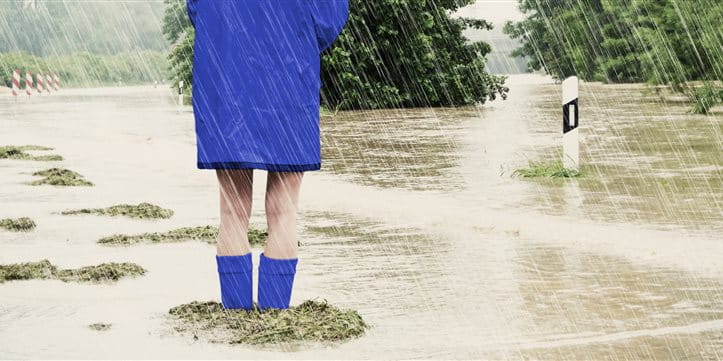A number of factors have to come together simultaneously for a thunderstorm to develop: certain wind and air pressure conditions and a corresponding terrain. This causes warm and humid air in higher strata to become not a normal cloud, but a thundercloud. It is huge and can hold up to 100 million tons of water.
Friction of the ice crystals
There are strong updrafts in the thundercloud, hurling the water droplets even further upwards, where they freeze into ice crystals that rub against each other. This is one of the reasons why an electrical charge builds up and finally discharges as lightning. This occurs especially in summer when it is hot and a lot of water evaporates. Including secondary lightning, lightning strikes around 150,000 times in Switzerland, according to MeteoSwiss, with southern Ticino being the unrivaled lightning hotspot.
In the Swiss Plateau, the weather services can usually announce thunderstorms a few hours in advance. But in the mountains they sometimes strike literally “out of the blue.” It is therefore all the more important to know the most important rules of conduct.
Protect yourself during thunderstorms
- Every year, several people are struck by lightning in Switzerland. Most survive – but sometimes a lightning strike can be fatal. You should therefore reduce the risk of being struck as much as is possible.
- Take thunderstorm warnings seriously and find out about current weather developments, for example with the push app from MeteoSwiss.
Want to seek shelter beneath a beech tree? You’d be well advised not to
- The old adage states that you should “avoid oaks and seek out beeches,” but sadly this isn’t a good idea. Avoid exposed trees, groups of trees, high bridges, masts, or towers, because lightning is particularly prone to strike where something protrudes out of the landscape.
- Metal and water also attract lightning. Leave the water immediately when swimming or sailing. Park your bike or motorbike if you are traveling with it.
- If you get caught in a thunderstorm while hiking, run to a hollow and squat down in a crouched position. Please note that the metal anchors of secured paths or climbing trails can also attract lightning.
Safe in the car and at home
- Seek shelter in your car: It forms a “Faraday cage” so that a lightning strike cannot reach you, since the metal deflects the lightning outside. You are also safe in buildings equipped with lightning conductors.
- And finally: Before leaving your home, unplug electrical appliances such as televisions and computers, otherwise there is a risk of damage due to overvoltage and possibly fire.
Properly insured against thunderstorms
Electrical appliances such as televisions or computers can be damaged if lightning strikes the power line, as this results in an “overvoltage.” Your contents insurance pays the replacement value, usually less a deductible of 200 Swiss francs. It also applies if the contents of the apartment have been damaged after a fire. The buildings insurance pays for any damage to the building. And if it hailed on your car, the single vehicle accidental damage insurance of the motor vehicle insurance comes into effect.

